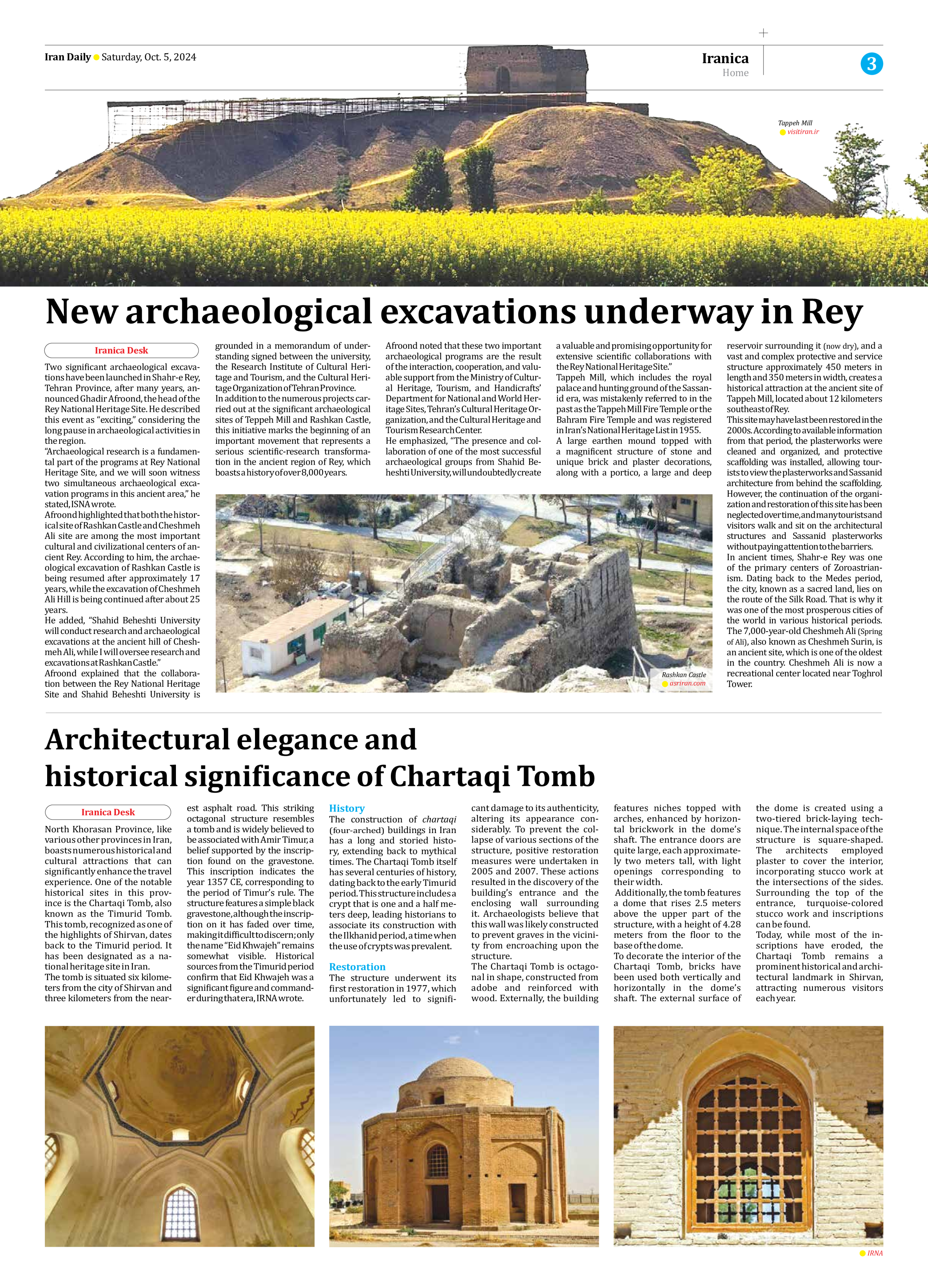
New archaeological excavations underway in Rey
Two significant archaeological excavations have been launched in Shahr-e Rey, Tehran Province, after many years, announced Ghadir Afroond, the head of the Rey National Heritage Site. He described this event as “exciting,” considering the long pause in archaeological activities in the region.
“Archaeological research is a fundamental part of the programs at Rey National Heritage Site, and we will soon witness two simultaneous archaeological excavation programs in this ancient area,” he stated, ISNA wrote.
Afroond highlighted that both the historical site of Rashkan Castle and Cheshmeh Ali site are among the most important cultural and civilizational centers of ancient Rey. According to him, the archaeological excavation of Rashkan Castle is being resumed after approximately 17 years, while the excavation of Cheshmeh Ali Hill is being continued after about 25 years.
He added, “Shahid Beheshti University will conduct research and archaeological excavations at the ancient hill of Cheshmeh Ali, while I will oversee research and excavations at Rashkan Castle.”
Afroond explained that the collaboration between the Rey National Heritage Site and Shahid Beheshti University is grounded in a memorandum of understanding signed between the university, the Research Institute of Cultural Heritage and Tourism, and the Cultural Heritage Organization of Tehran Province.
In addition to the numerous projects carried out at the significant archaeological sites of Teppeh Mill and Rashkan Castle, this initiative marks the beginning of an important movement that represents a serious scientific-research transformation in the ancient region of Rey, which boasts a history of over 8,000 years.
Afroond noted that these two important archaeological programs are the result of the interaction, cooperation, and valuable support from the Ministry of Cultural Heritage, Tourism, and Handicrafts’ Department for National and World Heritage Sites, Tehran’s Cultural Heritage Organization, and the Cultural Heritage and Tourism Research Center.
He emphasized, “The presence and collaboration of one of the most successful archaeological groups from Shahid Beheshti University, will undoubtedly create a valuable and promising opportunity for extensive scientific collaborations with the Rey National Heritage Site.”
Tappeh Mill, which includes the royal palace and hunting ground of the Sassanid era, was mistakenly referred to in the past as the Tappeh Mill Fire Temple or the Bahram Fire Temple and was registered in Iran’s National Heritage List in 1955.
A large earthen mound topped with a magnificent structure of stone and unique brick and plaster decorations, along with a portico, a large and deep reservoir surrounding it (now dry), and a vast and complex protective and service structure approximately 450 meters in length and 350 meters in width, creates a historical attraction at the ancient site of Tappeh Mill, located about 12 kilometers southeast of Rey.
This site may have last been restored in the 2000s. According to available information from that period, the plasterworks were cleaned and organized, and protective scaffolding was installed, allowing tourists to view the plasterworks and Sassanid architecture from behind the scaffolding.
However, the continuation of the organization and restoration of this site has been neglected over time, and many tourists and visitors walk and sit on the architectural structures and Sassanid plasterworks without paying attention to the barriers.
In ancient times, Shahr-e Rey was one of the primary centers of Zoroastrianism. Dating back to the Medes period, the city, known as a sacred land, lies on the route of the Silk Road. That is why it was one of the most prosperous cities of the world in various historical periods.
The 7,000-year-old Cheshmeh Ali (Spring of Ali), also known as Cheshmeh Surin, is an ancient site, which is one of the oldest in the country. Cheshmeh Ali is now a recreational center located near Toghrol Tower.







